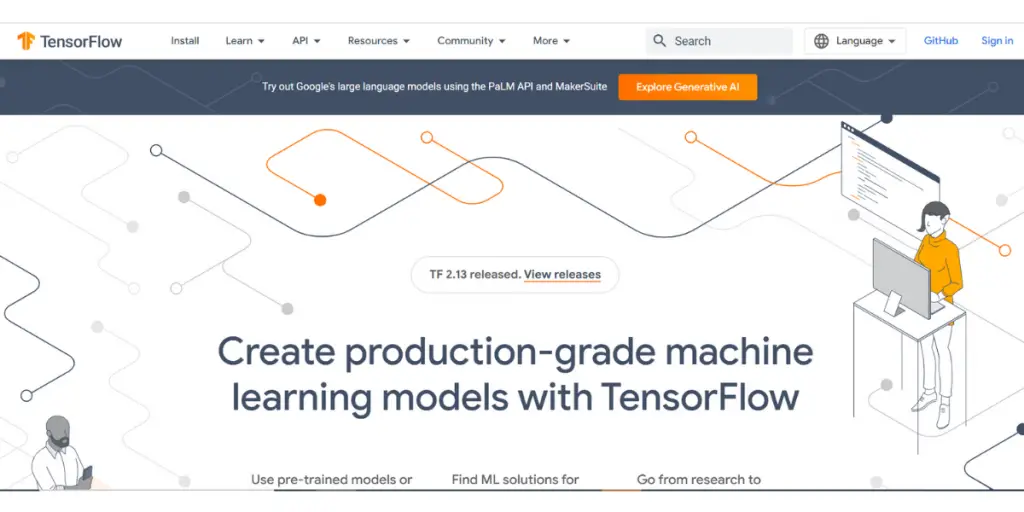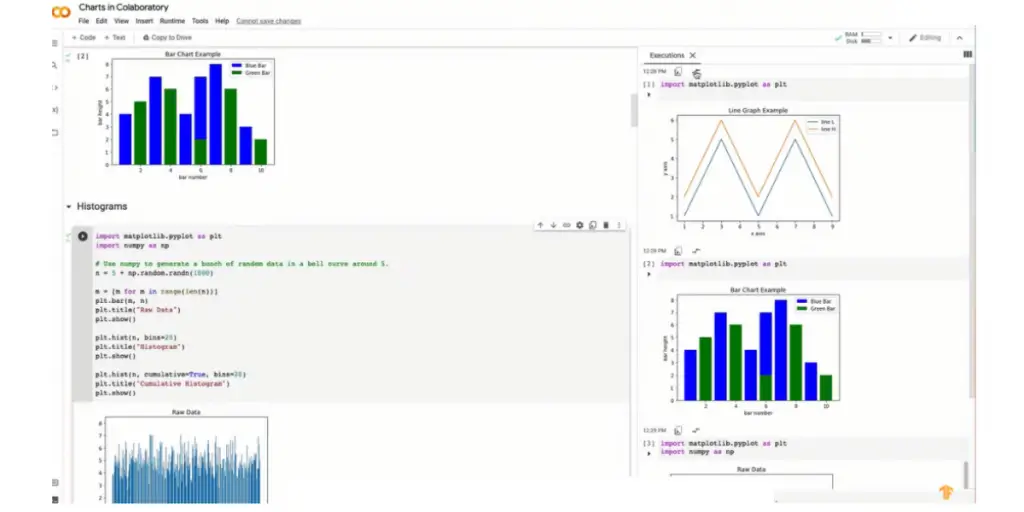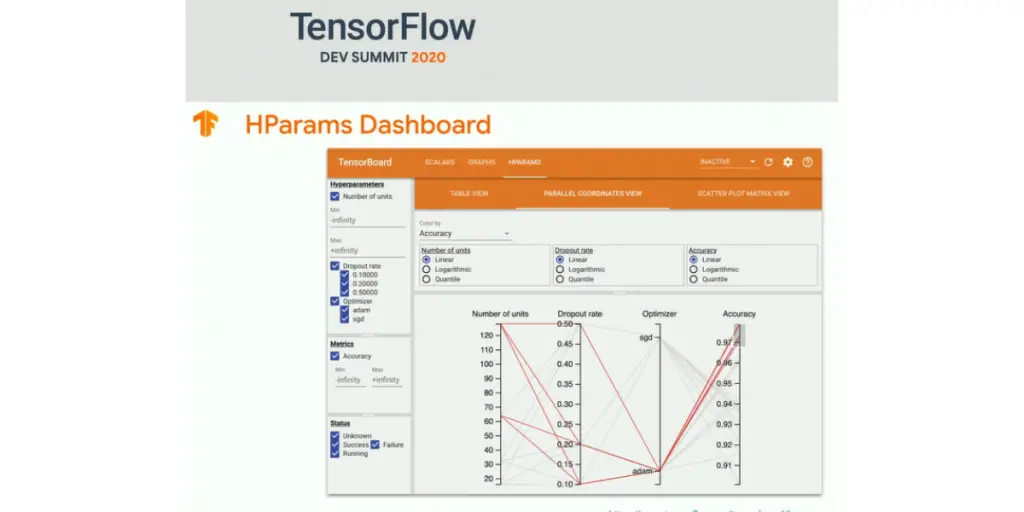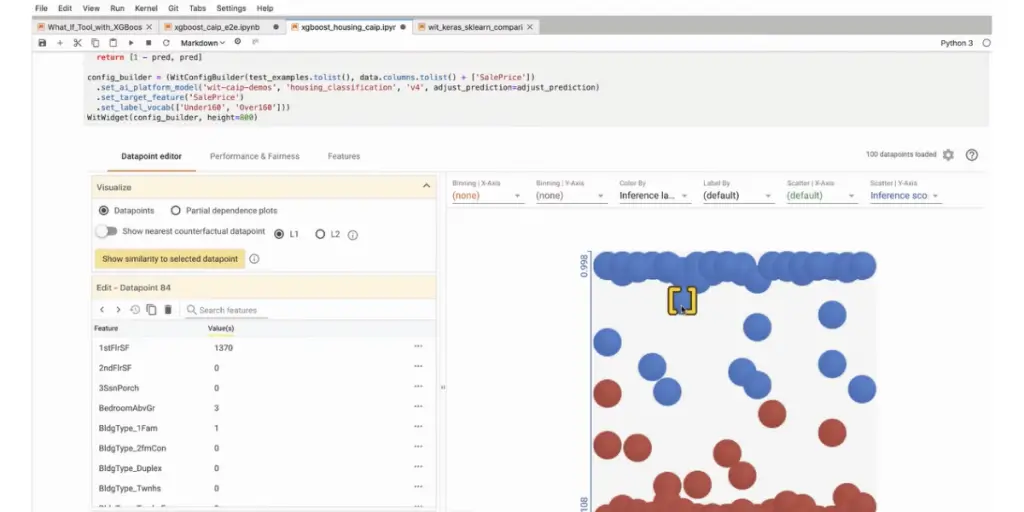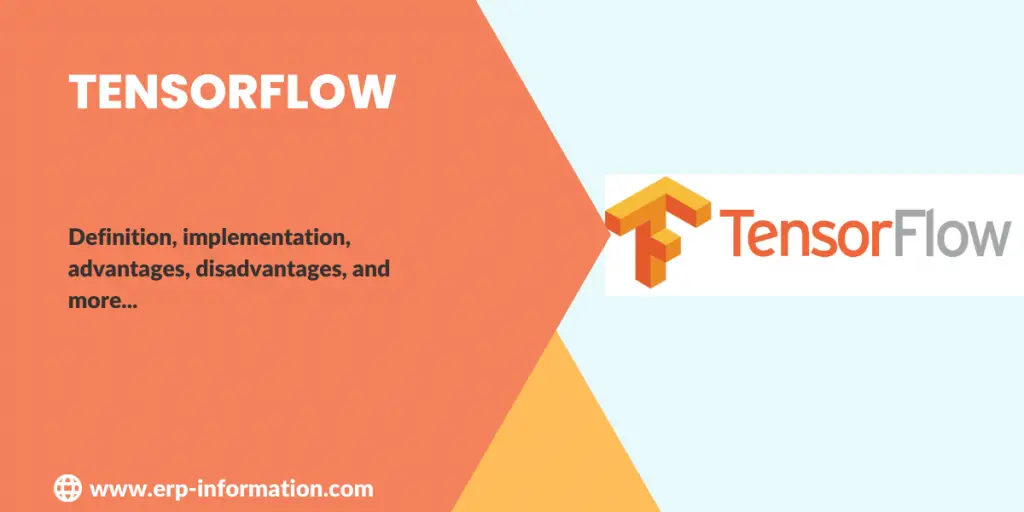
Are you looking for machine learning software? That can help automate tasks using algorithms to produce output and improve the desired outcome’s speed and accuracy.
The article discusses the TensorFlow machine learning software and its tools and pricing. It was created in 2015 by Google. It is a popular framework for deep learning and machine learning projects.
New version: v2.15.0
As of 2024 February
What is TensorFlow?
It is a powerful tool for large-scale machine learning and numerical computation. This library, developed by the “Google Brain Team,” includes many tools for training and optimizing machine learning models and researching new models and methods.
It is also used by many companies and organizations for production machine learning, including Google, Facebook, and Netflix. It is open source and released under the Apache 2.0 license.
Uses
- Useful in creating data flow graphs show the ups and downs.
- Mathematical operations are easily depicted through graphs.
- You can show operations using a flowchart.
Pricing
It is a free, open-source software library. Contact vendors for other pricing details.
TensorFlow Features
Prepare and load data for the successful ML outcome
It offers a variety of tools to help with data consolidation, cleaning, and preprocessing. The cleansing tool can remove duplicate or irrelevant data, and its data preprocessing tool can scale data to fit the training needs of your machine learning model.
- Standard data set for initial training and validation
- Data pipelines for loading data and scalability
- Common input transformation is done through preprocessing layers
- Large data validation and transformation are possible with tools
- AI is very helpful in producing ethical and fair outcomes
Build and fine-tune modules with the TranFlow ecosystem
An ecosystem built on the Core framework makes it easier to create models, train them, and export them.
It supports distributed training, immediate model repetition, and easy debugging with Keras open-source software library.
Model Analysis and TensorBoard are available to track your model’s development and improvement. In addition, TensorHub and Model Garden have high-level components to fine-tune the power modules.
Deploy models on-device, in the browser, on-prem, or in the cloud
The software lets you use your models on different devices – like servers, browsers, and mobile phones. You can also use it on microcontrollers, GPUs, FPGAs, and CPUs.The below two frameworks are useful for analyzing the data, improving privacy, and reducing delay.
- TensorFlow light: Helps to run models on Mobile, microcontrollers, and edge computing devices.
- TensorFlow.js: Run on machine learning with just a web browser.
Implement MLOps for production ML
This platform is an award-winning data automation, model tracking, and performance monitoring system.
It also helps you implement best practices with its robust analytics tools that are designed to work seamlessly together in one environment. In addition, tools help automate and track model training of the product, business process, and services.
Available tools for speeding up the workflows
- Colab: Collaboratory is a tool that lets you execute the TensorFlow code in your browser with no configuration required.
- TensorBoard: Tensorboard is a tool for better visualization, debugging, optimize of TensorFlow programs.
- What IF tool: This tool is helpful for ML software to debug, easily understand, and fairness.
- XLA(AccelarateLinear Algebra): is an Algebra compiler useful for TensorFlow computations. This can be helpful in the improvement of speed and memory usage.
- MLIR Unifies: This tool is useful to TensorFlow users to improve the usability of Tensorflow users and reduce costs.
Major strength
- Able to implement best practices for data automation, model tracking, and performance monitoring.
- Trains your models more efficiently with minimal effort or human intervention!
- Runs deep neural networks for handwritten digit classification.
- Image recognition
- Word embeddings
- Natural language processing
- Sequence-to-sequence models for machine translation
- The graph-based framework allows you to visualize the construction of neural networks with TensorBread.
Installation
- It can be directly installed via pip. Python Jupyter Notebook
- Install pip 3, then upgrade TransFlow
- Install TranFlow GPU for GPU support.
- $ Python -c Import TensorFlow, Print 2.0.0
Advantages
- High-performance-free open source
- Easy to install and setup a lot of ML algorithms
- Various APIs integrated with different programming languages
- Neural network and visual growth are another plus point
Disadvantages
- The price is high when it exceeds the free trial
- It takes some considerable time to understand
Other information
| Platform | Linux, macOS, Windows, Android, JavaScript |
| Programming languages | C++, Python, CUDA, and integrates with Java and R |
| Customer reviews | G2- 4.5 out of 5 (68+ reviews), Capterra : 4.6 out of 5 (103+reviews) |
Alternatives
- IBM Watson studio
- Google Cloud AI platform
- Amazon Sagemaker
- Google Cloud Auto ML
- Anaconda
- R studio
- Alteryx
- Azure Machine Learning studio
FAQs
Does NetFlix use TensorFlow?
The Netflix observability team has built an online inference system that runs real-time models on Tensorflow 2.0 in their data streaming application.
How do you make a model in TensorFlow?
Import the Fashion MNIST dataset.
Train and evaluate the module.
Add this tool serving distribution URI as a package source
Install Tensorflow serving
Start running
Make REST request
Conclusion
After reading this blog post, you may understand what TensorFlow is and how it can be used in machine learning. However, you should also be aware of some of its advantages and disadvantages.
While it may not be the best tool for every problem, it is a powerful tool that can resolve many complex issues.
We hope we have provided you with a complete picture of better machine-learning software.
Reference
